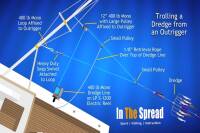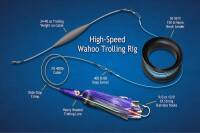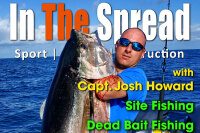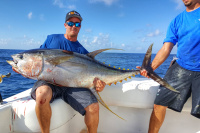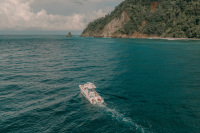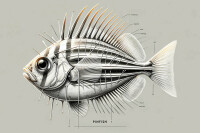Largemouth bass fishing in summer can be challenging due to hot water temperatures. Anglers must examine elements like current and thermocline to find fish. Current is crucial for feeding, and finding ambush spots on deep structures is essential. Angles and boat position are key, and working at different angles helps determine the bass' setup.
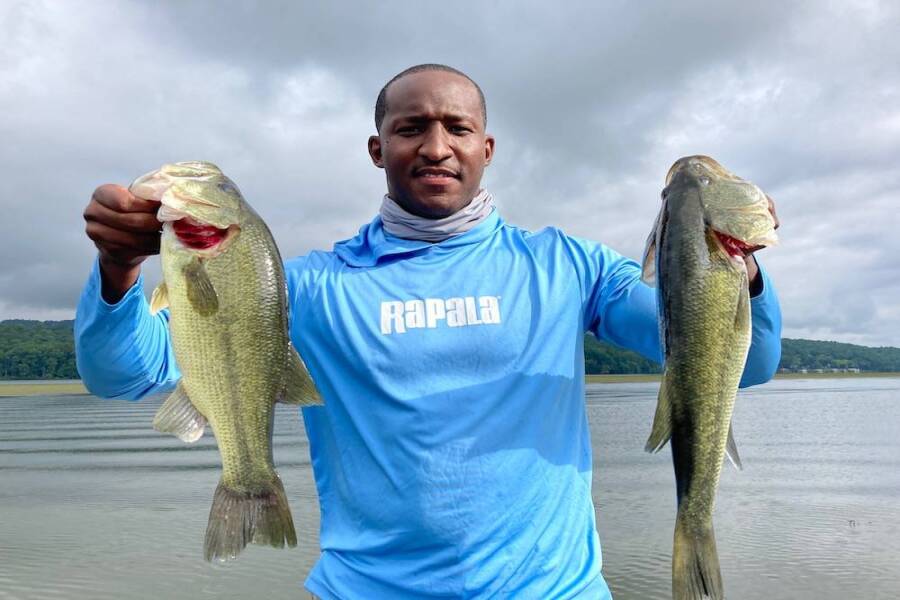
Largemouth Bass Fishing - Hot Weather
Largemouth bass fishing in the blistering heat of summer can present multiple challenges. Hot water temperature takes most largemouth bass anglers out to the deep water looking for the fish that have gone to the cooler water temperatures. It is only natural to fish deep when this occurs; the question is where do the bass go? When you get on your deep spot and wonder why those bass were there one day and appeared to be gone the next, I think you need to examine the elements. Is there current moving or not, is the thermocline developed at the bottom and moved the fish? These questions are ones that will supply you with the key to finding the fish.
Current on many largemouth bass lakes is the key element many times to getting the fish to feed. Many reservoirs are backed up by dams and without the current getting a bite can be nearly impossible. In current largemouth bass tend to position themselves so they can take advantage of the current and feed easily, so an ambush spot is the key to finding those fish? The job you have is determining where they will be positioned on deep structure. Angles become an especially important part of deep structure fishing. Find structure with your electronics and work the structure from several different angles until you get a bite. Take mental notes of the position of your boat when you get a bite. It will tell you how the bass are positioned and lead to the correct position on the structure you need to fish and this will probably be the same on other structure you will fish while the current is moving. Boat position is the key. I can’t tell you the number of times I tell someone to work at an angle while I’m guiding, just don’t fish an edge or drop from one position. Work all the angles until you figure out how the largemouth bass are setting up.
The thermocline is also a big issue, as we approach these 90-degree water temperatures. Surface temperature is always much warmer than the water 20 plus feet down. What happens is the colder water or deeper water is much heavier than the warm water. It settles on the bottom and the weight of the water squeezes the oxygen out of the deep water, moving the fish to areas where there is more oxygen. Bass must have oxygen to breathe and the thermocline can be void of oxygen for a period of time during this period of high surface water temperatures. The warmer water being physically lighter has more oxygen than the colder deeper water. This change in temperature from the surface to the bottom in deeper water can be drastic and it is a known fact that the colder water is heavier than the warm water. As a side note, this is also what leads to turn-over in the fall, as the opposite occurs. The surface water temperature cools from the colder fall temperatures and the surface water becomes heavier than the warmer bottom water causing the top water to drop to the bottom. Once again this moves the fish as it does in the summer. It also moves them in the fall until the temperatures even out.
This phenomenon is a result of the hot weather temperatures we get in the summer or cooler weather temperatures we get in the fall and adjusting your fishing areas, tactics, and depth will be the key to being successful in these hot summer days or late fall. Current and structure create oxygen in the water. So, any combination of this can help you find areas that will allow you to be successful on your lake. Deep water is not always the key, but it is a summer pattern to be examined, understood and adjusted for to achieve largemouth bass fishing success.
Captain Mike Gerry
Fish Lake Guntersville Guide Service
www.fishlakeguntersvilleguideservice.com
Email: bassguide@comcast.net
Call: 256 759 2270
In The Spread is one of the world's premier sport fishing video companies and educational outlets for demonstration, explanation and insight on how to catch fish. Get inside access to our video library by becoming a member.
Mike Gerry In The Spread, Instructor
